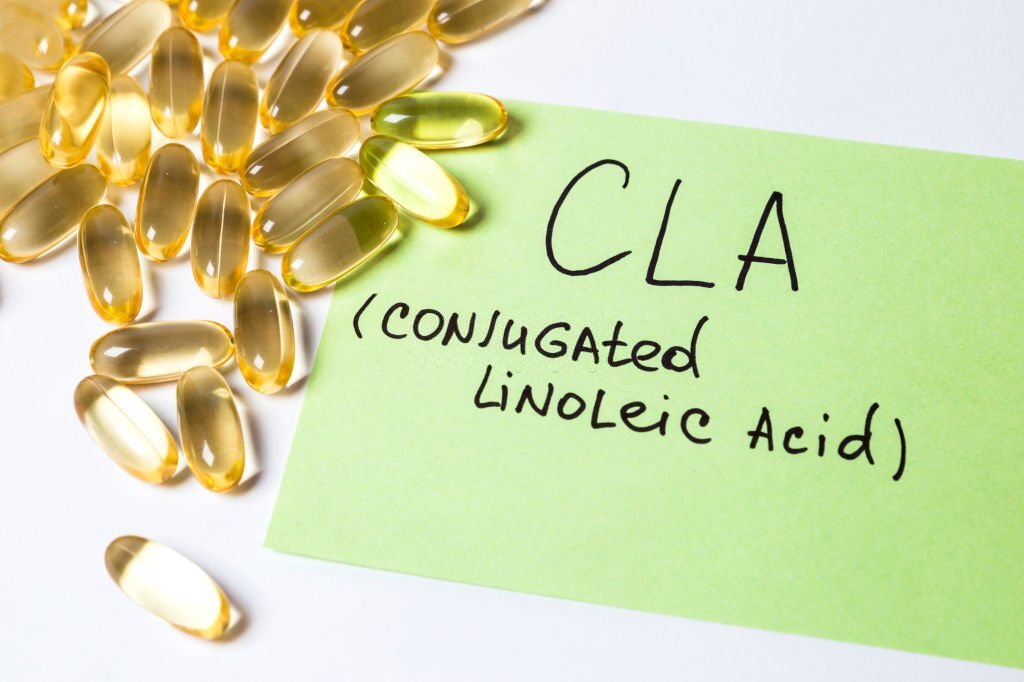“The primary dietary sources of Conjugated Linoleic Acid are animal products such as meat, dairy, and eggs.
However, the amount of Conjugated Linoleic Acid (CLA) in these foods can vary widely depending on the animal’s diet and other factors.”
– Harvard Health Publishing
Conjugated Linoleic Acid (CLA) is an adipose acid that has gained popularity over the years for its implicit health benefits. CLA is commonly found in dairy products and meat and is also available as a salutary supplement.
What does Conjugated Linoleic Acid do?
Conjugated Linoleic Acid is believed to help reduce body fat, increase spare muscle mass, and improve vulnerable functions. Some studies have also suggested that CLA may have cancer-fighting properties and may help reduce the risk of heart diseases to help reduce body fat, increase spare muscle mass, and improve vulnerable functions.
What are the benefits of CLA?
The implicit benefits of Conjugated Linoleic Acid include:
- Muscle gain CLA is believed to help increase spare muscle mass by promoting the growth of muscle tissues, and helping to fat loss.
- Advanced vulnerable function CLA is believed to help improve vulnerable function by increasing the production of white blood cells.
And Cancer-fighting properties, and the reduced risk of heart disease.
Read More: How Do White Label Supplements Work?
Conjugated Linoleic Acid Side Effects
CLA is commonly considered safe for utmost people when taken in recommended doses. However, some people may experience lateral Effects, including
Digestive issues Some people may experience digestive issues similar to diarrhea, nausea, and stomach cramps when taking CLA supplements.
Antipathetic reactions Some people may experience antipathetic reactions to CLA supplements, which can cause symptoms similar to hives, itching, and difficulty breathing.
Is conjugated linoleic acid a fat burner?
Further research is needed in this area to completely understand the implicit fat-burning properties of CLA.
Some safe dosages for CLA supplements
The recommended dosage for CLA supplements can vary depending on the specific production and the individual’s needs. However, utmost studies have used doses ranging from 3 to 6 grams per day.
It’s also important to choose a high-quality CLA supplement from an inestimable manufacturer to ensure that you’re getting a safe and effective production. Look for supplements that are third-party tested for purity and quality and that have clear dosage instructions on the label.
The recommended dosage for CLA supplements is 3 to 6 grams per day.
CLA supplements are popular health supplements containing conjugated linoleic acid. This is a type of adipose acid found naturally in foods such as beef and dairy product.
CLA supplements are often marketed as a weight loss aid and are believed to help reduce body fat and increase spare muscle mass.
Despite the implicit benefits of CLA supplements, it’s imperative to note that they may also cause side effects, especially at high doses. Some of the implicit side Effects of CLA supplements include digestive issues similar to diarrhea, nausea, stomach cramps, insulin resistance, increased liver fat, and antipathetic reactions.
These include beef and dairy productions from grass-fed cows, which are commonly more advanced in CLA than productions from conventionally raised animals.
Some other natural food sources of CLA
- In addition to beef and dairy production from grass-fed cows, there are several other natural food sources of CLA. Here are some examples
- Lamb is a good source of CLA, especially when it’s grass-fed
- Goat meat and milk are also good sources of CLA, especially when the animals are grass-fed
- Butter from grass-fed cows is a good source of CLA, with advanced levels of CLA than Butter from conventionally raised cows.
- Cheese from grass-fed cows is also a good source of CLA, with advanced levels of CLA than Cheese from conventionally raised cows.
- Eggs from chickens that are fed a diet rich in grass and bugs may contain more advanced levels of CLA than eggs from conventionally raised chickens.
- Mushrooms Some types of mushrooms, similar to shiitake and white button mushrooms, contain small quantities of CLA.
- However, incorporating these foods into a healthy diet can provide a natural source of CLA along with other important nutrients.
They are many recipes or ideas that incorporate natural sources of CLA
- Grilled Lamb Chops with Herb Butter Brush lamb chops with olive oil and sprinkle with salt and pepper. Grill over medium-high heat until cooked to the desired doneness. Meanwhile, blend softened Butter with chopped fresh herbs similar to rosemary, thyme, and parsley. Serve the lamb chops with a dollop of the herb Butter on top.
- Goat Cheese and Mushroom Omelette Whisk together eggs, salt, and pepper. In a skillet, sauté sliced mushrooms until tender. Pour the eggs into the skillet and cook until set. Crumble goat Cheese over the top and fold the omelet in half.
- Grass-Fed Beef Burger Mix grass-fed ground beef with salt, pepper, and any desired seasonings similar to garlic grease paint or onion grease paint. From the mixture into patties and grill or cook in a skillet until cooked to the desired doneness. Serve on a whole-grain bun with herbs similar to lettuce, tomato, and avocado.
- Grass-Fed Buttered Toast with Eggs Toast whole-grain bread and spread grass-fed Butter. Shindig or scramble eggs and serve on top of the toast.
- Grilled Cheese with Grass- Fed Cheese Spread grass-fed Butter on whole-grain bread and top with sliced grass-fed Cheese. Grill in a skillet until the Cheese is melted and the bread is toasted.
These recipes are just many examples of how you can incorporate natural sources of CLA into your diet. Flashback to choosing high-quality grass-fed meats and dairy products to ensure that you’re getting the most CLA and other important nutrients from your food.
Read More: probiotic supplements – 6 Things To Know Before Taking Them

